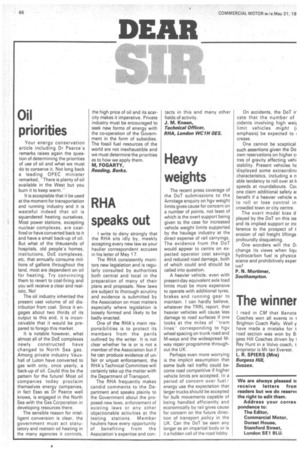Heavy weights
Page 68

If you've noticed an error in this article please click here to report it so we can fix it.
The recent press coverage of the DoT submissions to the Armitage enquiry on hgv weight limits gives cause for concern on a number of points, not least of which is the overt support being given to the case for increased vehicle weight limits supported by the haulage industry at the direct expense of rail carryings. The evidence from the DoT would appear to centre on expected operator cost savings and reduced road damage, both of which could and should be called into question.
A heavier vehicle, even with present-day equivalent axle load limits must be more expensive to operate with additional tyres, brakes and running gear to maintain. I can hardly believe, whatever the TRRL report, that heavier vehicles will cause less damage to road surfaces if one looks at the miles of "tram lines" corresponding to hgv wheel spacing on trunk road and M-ways and the widespread Mway repair programme throughout the UK.
Perhaps even more worrying is the implicit assumption that some bulk rail traffic could become road competitive if higher vehicle limits are accepted. In a period of concern over fuel / energy use the expectation that larger trucks should be accepted for bulk movements capable of being handled efficiently and economically by rail gives cause for concern on the future direction of transport policy in the UK. Can the DoT be seen any longer as an impartial body or is it a hidden cell of the road lobby. On accidents, the DoT ir cate that the number of cidents involving high wei limit vehicles might (i emphasis) be expected to I crease.
One cannot be sceptical such assertions given the Do own reservations on higher ci tres of gravity affecting vehi stability. Present vehicles hE 'displayed some extraordim characteristics, including a n able tendency to roll over at Ii speeds at roundabouts. Cot one claim additional safety a: benefit if a heavier vehicle to roll or lose control in crowded town or city centre.
The overt modal bias d played by the DoT on this iss and its implied support or inc ference to the prospect of t erosion of rail freight liftings profoundly disquieting.
One wonders will the Di change its views when liqu hydrocarbon fuel is physica scarce and prohibitively exper ive?
P. N. Mortimer, Southampton.




























































































































